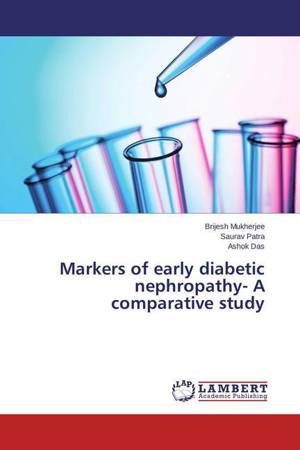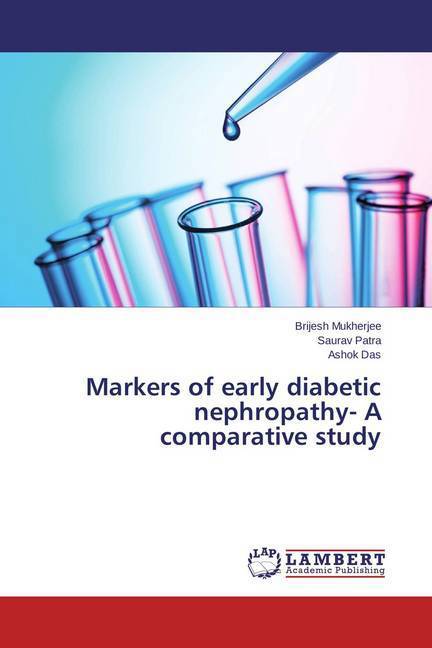
- Afhalen na 1 uur in een winkel met voorraad
- Gratis thuislevering in België vanaf € 30
- Ruim aanbod met 7 miljoen producten
- Afhalen na 1 uur in een winkel met voorraad
- Gratis thuislevering in België vanaf € 30
- Ruim aanbod met 7 miljoen producten
Zoeken
Markers of early diabetic nephropathy- A comparative study
Brijesh Mukherjee, Saurav Patra, Ashok Das
Paperback | Engels
€ 55,95
+ 111 punten
Omschrijving
Diabetes has become the most common single cause of end stage renal disease (ESRD) in most countries; this is due to the fact that diabetes, particularly type 2, is alarmingly increasing in prevalence rate, diabetic patients now live longer and patients with diabetic ESRD are now accepted for treatment in ESRD programs where formerly they had been excluded. About 20-30% of patients with type 1 or type 2 Diabetes develop evidence of nephropathy. Recent studies have now demonstrated that the onset and course of DN can be ameliorated to a significant degree if treatment is started at an early stage. So there are different ongoing researches to find out an endogenous marker which can detect DN at an early stage. This study aims at finding out the role of Cystatin C, a relatively new marker for diabetic nephropathy. This study also involves comparison of Cystatin C with serum creatinine and microalbuminuria (established parameters for diagnosis of DN) and to find out whether Cystatin C can be a better marker for detection of early diabetic nephropathy.
Specificaties
Betrokkenen
- Auteur(s):
- Uitgeverij:
Inhoud
- Aantal bladzijden:
- 128
- Taal:
- Engels
Eigenschappen
- Productcode (EAN):
- 9783659692956
- Verschijningsdatum:
- 8/04/2015
- Uitvoering:
- Paperback
- Afmetingen:
- 150 mm x 220 mm
- Gewicht:
- 200 g

Alleen bij Standaard Boekhandel
+ 111 punten op je klantenkaart van Standaard Boekhandel
Beoordelingen
We publiceren alleen reviews die voldoen aan de voorwaarden voor reviews. Bekijk onze voorwaarden voor reviews.








